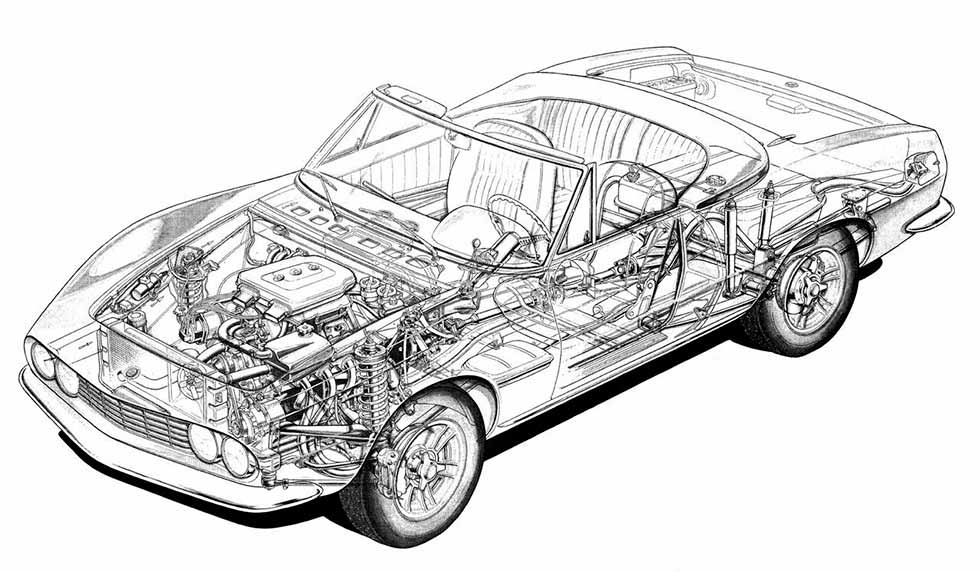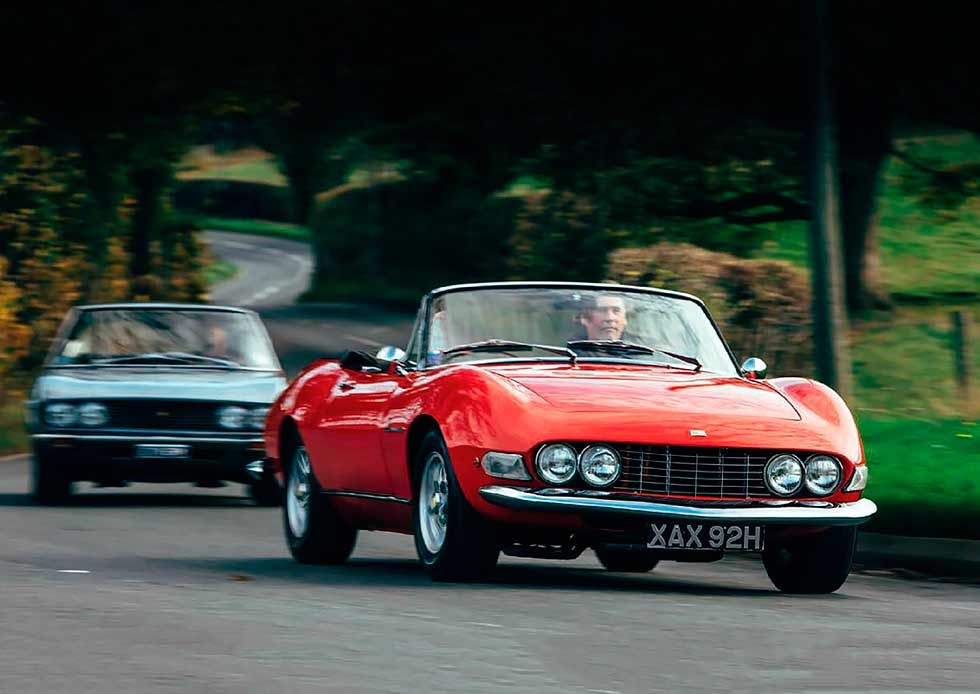
When Fiat met Ferrari Dino Spider and Coupé. The Dino from Turin. Fiat’s Coupé and Spider emerge from the shadow of their Ferrari namesake. The Fiat and Ferrari collaboration that gave birth to the Dino V6 produced some exquisite machinery, says Ross Alkureishi as he samples the oft-forgotten Turin variants. Photography Malcolm Griffifths.
Standing on the shoulders of giants
Breaking news: in addition to the 124 Spider’s 2015 LA Motor Show debut, and despite initiating the great Ferrari sell-off, Fiat-Chrysler Automobiles has just announced a deal to build and use the legendary manufacturer’s all-new V6. The power unit behind Maranello’s upcoming mid-engined model, this quad-cam jewel is now destined for Spider and Coupé variants bearing the Fiat badge. The combined production effort will ensure that the necessary homologation numbers are constructed quickly enough to allow the V6 to go racing. Quick, check the date: is it 1 April? Of course, it could never happen now. And yet in 1967 three quite different cars, all called Dino – a Ferrari and two Fiats – were launched with the same F2-derived 1987cc V6. True, Abarth had long been producing fire-breathing Fiats of various four-pot flavours, and was still – just – an independent entity, but this was different.
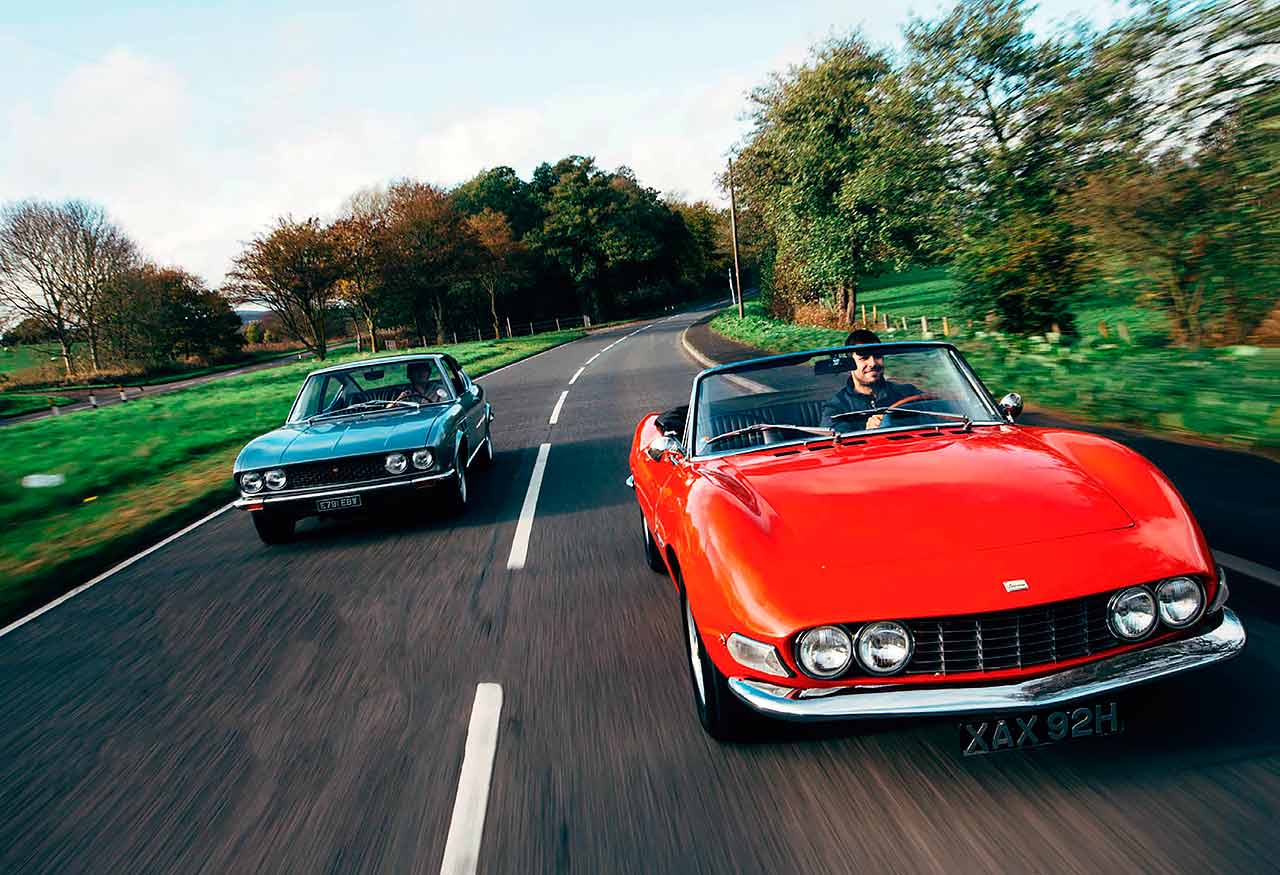
Having a little of the Scuderia’s magic dust sprinkled down from above must have been manna from petroleum heaven if you were a Fiat aficionado. Quite what it was like from a Ferrari perspective, we can only surmise.
The benefit of hindsight obviously allows an educated guess. Maranello’s Dino appeared to be an almost clandestine effort, lacking the appropriate number of cylinders even to bear the Ferrari name. Never mind that its Pininfarina styling positively dripped with sensuality or that the driving experience offered handling accessibility and raw performance to send even the hardest-nosed Tifosi into raptures. Indeed, it wouldn’t be accepted into the Ferrari road car fold until well into its dotage – although it’s a rare example that wears only Dino badges today.
So what of the Fiat variants? Well, for a number of decades they had an even harder time, and the toxic combination of low values combined with being ‘a Fiat with Ferrari running costs’ meant that the attrition rate was damnably high. During those lean years, to all but a few hardened cognoscenti, the cars may have been easy to dismiss. The ascent of the Cavallino-badged Dino to iconic status, however, means that these little-known, left-hand-drive beauties are now emerging to be judged on their own merits.
Back in the ’60s, Ferrari’s raison d’être was racing, with a few road cars thrown in to fund matters. Pre-Dino, total production for many of its models remained in three figures, with even its best-selling 330GT taking four years to – only just – pass the 1000 mark. Desperate to homologate its 1.6-litre Formula 2 engine for 1966, but aware that it didn’t have the capacity to hit the necessary 500 units, the Scuderia enlisted the help of Fiat. The latter would build the engine – a Franco Rocchi adaptation of Vittorio Jano’s 1957 Type 196 unit – for use in the new Dino 206, while also producing a model of its own that would utilise the same powerplant.
This marriage of convenience suited both parties, with the Turin giant able to replace its somewhat aged prestige model, the 2300S. To do so, in addition to the planned Spider, a full four-seater fixed-head entered the company’s strategy. Pininfarina, however, would be at full tilt supplying bodies for the open car – alongside Alfa Romeos and Peugeots, to name a couple – so rival Bertone sealed the deal for Coupé construction. In both cases, the Dino name would be retained as a memorial to Enzo Ferrari’s son Alfredo, who had worked on the original engine with Jano but tragically passed away in 1956 at the age of just 24.
Making its debut at the ’1966 Turin Salon, the Spider featured stunningly elegant Farina styling but the undoubted star of the show was its 2-litre all-alloy 65° V6. With twin-overhead camshafts per bank, a compression ratio of 9:1 and triple Weber carbs, it was good for 160bhp at a lofty 7200rpm. A five-speed gearbox came as standard and the front suspension was independent by coil springs, wishbones and an anti-roll bar. Surprisingly for such a pedigree, the rear had a relatively unsophisticated live axle, with semi-elliptic leaf springs, radius arms and twin dampers per side.
Not that the latter mattered, because the car was greeted with great enthusiasm, Autosport calling it both a ‘driver’s car par excellence’ and a ‘high-spirited animal’. The magazine did cite the rear suspension as ‘unusual’ (though found no fault with it), but singled out the engine for praise, describing it as ‘smooth beyond belief’ and with a song ‘too sweet for words’.
Unveiled at the ’1967 Geneva Salon, the Coupé was the antithesis of its lithe open-topped sibling. The lines – penned by Giorgetto Giugiaro – provided a sober contrast, and prompted Car, rather unfairly, to deem the new model ‘not particularly exciting to look at’. What was appreciated was the interior space – thanks to a 10in longer wheelbase – and higher level of finish. Underneath, the mechanicals were identical, save for a switch to double leaf springs at the rear.
Up close, the Coupé does indeed suffer in comparison, but that’s only because the Spider is so alluring – further enhanced here by ‘our’ example’s colour. “It really does photograph itself,” enthuses snapper Griffiths. To my eyes, it works beautifully from every angle; the rear end is clean and uncluttered, while the sweeping front wheelarches mimic those of its 206 cousin, lending it a graceful femininity. Offsetting this is the masculinity of that brooding nose. It’s a design with real depth and undoubted presence.
If you prefer your classic aesthetics to be of a less extrovert bent, those of the Coupé work equally well. In darker hues it has an almost sinister presence – fuelled, no doubt, by memories of its role in The Italian Job – but this car’s lighter colour accentuates the uncluttered lines. It’s both handsome and stylish, if understated.
Step inside, though, and it’s the Coupé that impresses. The bucket seats offer first-class support and are the perfect foil for long-distance cruising. The Jaeger instrumentation has a look of quality, and all of the controls are conveniently placed. There’s a state-of-the-art (for its day) ventilation system, featuring speed-sensitive regulation of fresh air volume. This uses a combination of vents and rear pillar-located extractor ducts – the latter closing on deceleration to stop the ingress of exhaust gases. Accentuating the luxury is the fact that vendor Cheshire Classic Cars has recently fitted a leather interior to this example, replacing the original vinyl. It’s a fine space in which to spend time.
Over in the Spider, there’s a less sophisticated (but more effective) method of ventilation: dropping the top. There’s also a stunning aftermarket Nardi steering wheel – enough to lift any cabin, whether Ferrari, Maserati or Fiat – but the seats are nowhere near as good as those of the Coupé, and the wood veneer lends a feeling of the car being a tier down the food chain. It’s a little uninspiring considering the exterior clothing. What isn’t, though, is the view over those curvaceous wings; like the Dino 206, it’s a visual triumph, to be savoured each time you sit behind the wheel.
Sparking up the V6 is all drama – more so here because the Spider has a custom exhaust that dispenses with four of the original over-silenced system’s six boxes. The result is a note much closer to that of its Ferrari cousin. The triple Webers make their collective displeasure known at low revs, fluffing, huffing and puffing in protest, but get above 4000rpm and power is delivered in a continuous and wondrously smooth hit. The low-speed mechanical chunterings are replaced with a soul-inspiring howl that continues to harden as the needle spins towards 7500rpm. The gearbox – a 2300S casing with custom internals – offers shifts that are precise and always notchy, but engaging reverse isn’t something that can be done in a hurry.
With an extra 130kg, the Coupé feels a touch more ponderous under hard acceleration and its steering heavier. It will still dispatch 0-60mph in 8.5 secs – just 0.4 secs slower than the Spider – and, despite the closed roof, there’s plenty of aural pleasure to be had from the engine. It’s just that the experience is all cosseted-luxury GT rather than nimble hair-in-the-air sports car. Yet spirited driving is still easily conducted. The Coupé feels well planted on the road and, unlike the Spider, it doesn’t involve repeated muscular contractions to maintain your driving position. Surprisingly, given its limitations, the rear axle set-up doesn’t affect either model too much; the combination of twin dampers per side and a limited-slip diff combine to give them relatively neutral handling characteristics. Only an excessively heavy foot or rash braking through corners will highlight any shortcomings. Despite its short wheelbase, the Spider tracks very well with little in terms of body roll, and just a hint of scuttle shake. It feels light and nimble yet more on edge, while the weightier Coupé has perhaps a slightly higher feeling of security.
Later variants (released in November 1969) would receive the independent rear from the Fiat 130 Sedan, as well as a new iron-block 2419cc version of the V6. The superior suspension was compromised a little by the extra weight of the engine, so they actually seem a mite less balanced than their predecessors. The new power unit, however, rectified many of the issues suffered by the early (and somewhat under-developed) 2-litre cars – including plugfouling and overheating – as well as providing an additional 20bhp and a 25% improvement in torque. These versions also gained the Fiat 130’s five-speed ZF gearbox.
Whether you prefer the 2- or 2.4-litre Dinos is down to personal taste, but one thing is for sure – both are exceedingly rare in the UK. Like many cars with an exotic heart, they were raided to provide engines for their more celebrated relative. To the question of Spider or Coupé, for top-down summer blasts, a shape that you’ll never tire of looking at and, dare I say it, sheer posing value, it has to be the former. CCC proprietor Iain Tyrrell owned one as a thrusting 20 year old and assures me that he’s never had a car that garnered so much attention. For long-distance cruising accompanied by a glorious soundtrack, go for the much cheaper Coupé. Fiat sold 1163 2-litre Spiders and 3670 Coupés, plus another 424 open and 2398 closed 2.4-litre cars. In contrast, from 1967-’1969 Ferrari sold just 152 Dino 206s, so the Fiats served their purpose, allowing swift homologation of the F2 engine. Interestingly, the later Ferrari Dinos would go on to become the firm’s best-seller, with sales in the thousands. But that happened only as a result of a remarkable collaboration – the like of which we’re unlikely to see again.
Thanks to Iain Tyrrell and Damon Milnes of CCC: 01244 529500; www.cheshireclassiccars.co.uk
Tech and photos
‘THE SCUDERIA’S MAGIC DUST MUST HAVE BEEN MANNA FROM PETROL HEAVEN FOR FIAT AFICIONADOS’
‘THE VIEW OVER THE CURVACEOUS WINGS IS A VISUAL TRIUMPH, TO BE SAVOURED EACH TIME YOU SIT IN IT’
‘IT IS MORE COSSETED-LUXURY GT THAN HAIR-IN-THE-AIR SPORTS CAR, YET SPIRITED DRIVING’S STILL EASY’
TECHNICAL DATA FILE SPECIFICATIONS FIAT DINO SPIDER 2000
Sold/number built 1967-’1969/4833 (including Coupé)
Construction steel monocoque
Engine all-alloy, quad-cam 1987cc V6, triple twin-choke Weber 40 DCN 14 carburettors
Max power 160bhp @ 7200rpm / DIN nett
Max torque 127lb ft @ 6000rpm / DIN nett
Transmission five-speed manual, driving rear wheels
Suspension: front independent by coil springs, wishbones and anti-roll bar / rear live axle with radius arms, semi-elliptic springs; telescopic dampers all round (twin per side at rear)
Steering Gemmer worm and roller
Brakes discs all round
Length 13ft 6in (4109mm)
Width 5ft 7in (1710mm)
Height 4ft 2in (1270mm)
Wheelbase 7ft 6in (2280mm)
Weight 2535lb (1150kg)
0-60mph 8.1 secs
Top speed 130mph
Mpg 17-20
Price new N/A (special order in UK)
Price now £50,000-120,000
TECHNICAL DATA FILE SPECIFICATIONS FIAT DINO COUPÉ 2000 (Where different)
Suspension rear double leaf springs
Length 14ft 9in (4507mm)
Height 4ft 3in (1287mm)
Wheelbase 8ft 4in (2550mm)
Weight 2822lb (1280kg)
0-60mph 8.5 secs
Top speed 124mph
Price now from £20,000-50,000
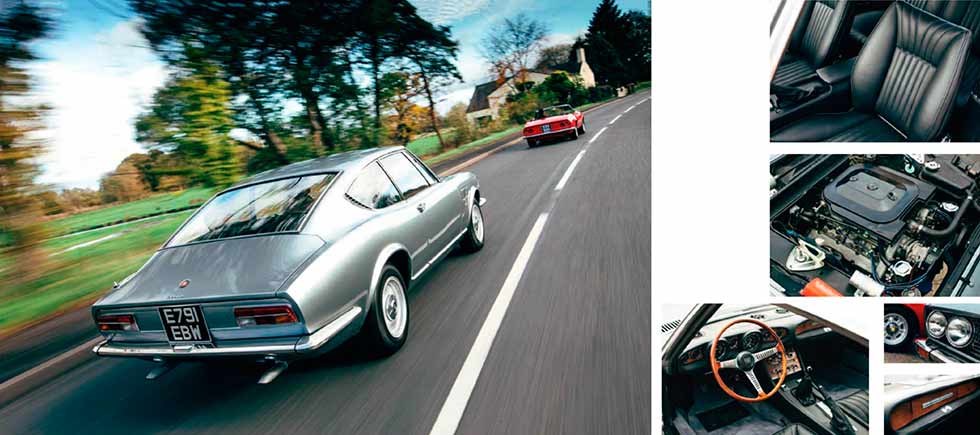

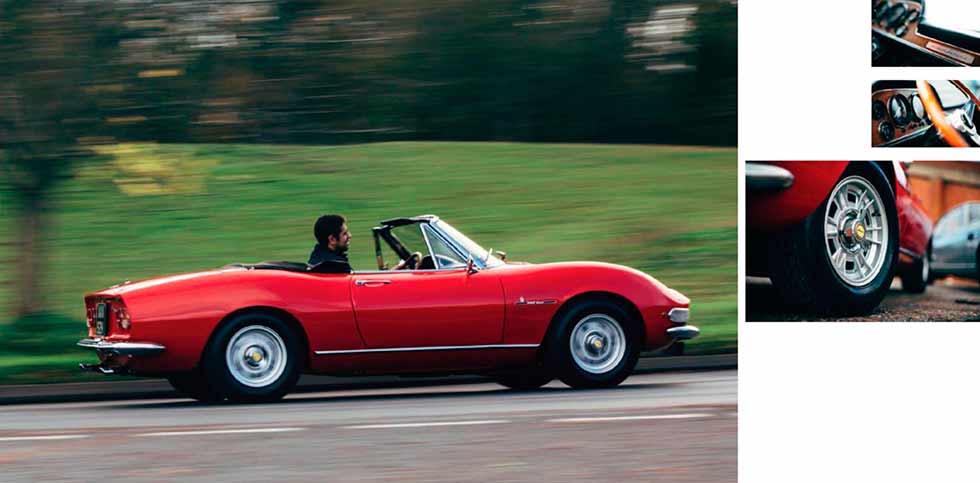
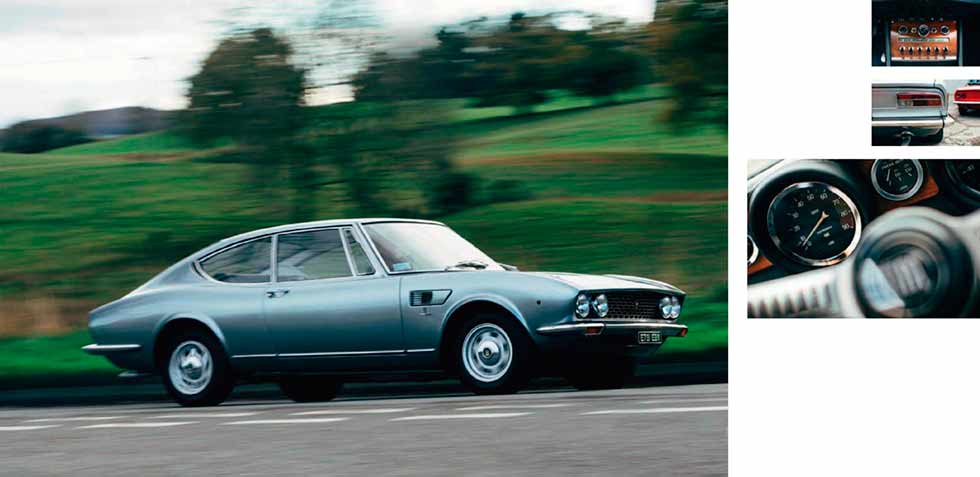
Specialist view
“The Fiat Dino has been undervalued for many years and is a rare sight on our roads,” says CCC’s Milnes. “All models have increased in value by at least a fifth in the past two years and, while later cars used to be valued 20% higher, this gap has narrowed due to the scarcity of either variant. Personally, I prefer the lighter, crisper feel of the 2-litre cars but there’s no general agreement on which is better.

“The Coupé is a very usable classic, with good levels of trim and refinement, while the Spider is invigorating to drive and beautiful to look at – one of those designs that just looks right. Buyers need to be aware of the cost of engine rebuilds – this Spider had one recently, costing £10k – and the rarity of replacement body panels, trim and badges. Look for smoky V6s with rattling timing chains and low oil pressure – although gauges are often inaccurate. Rust is an issue, especially floors and wings. “Annual running costs should be no more than £1000, as long as the car is always warmed up properly and the levels checked regularly.”
